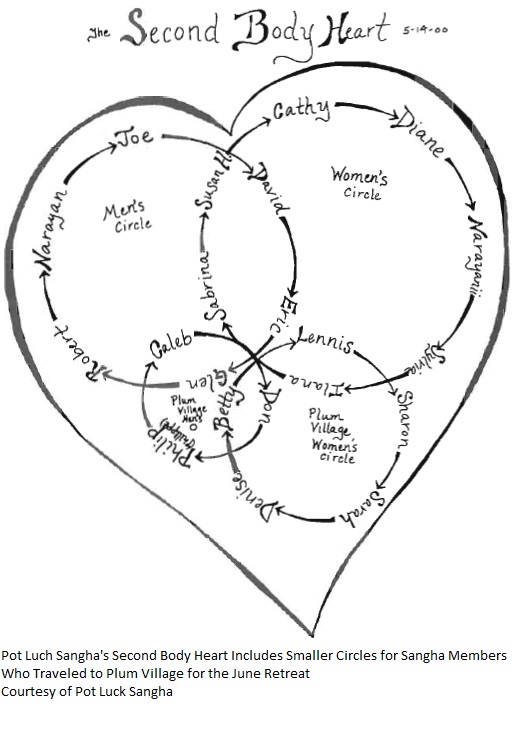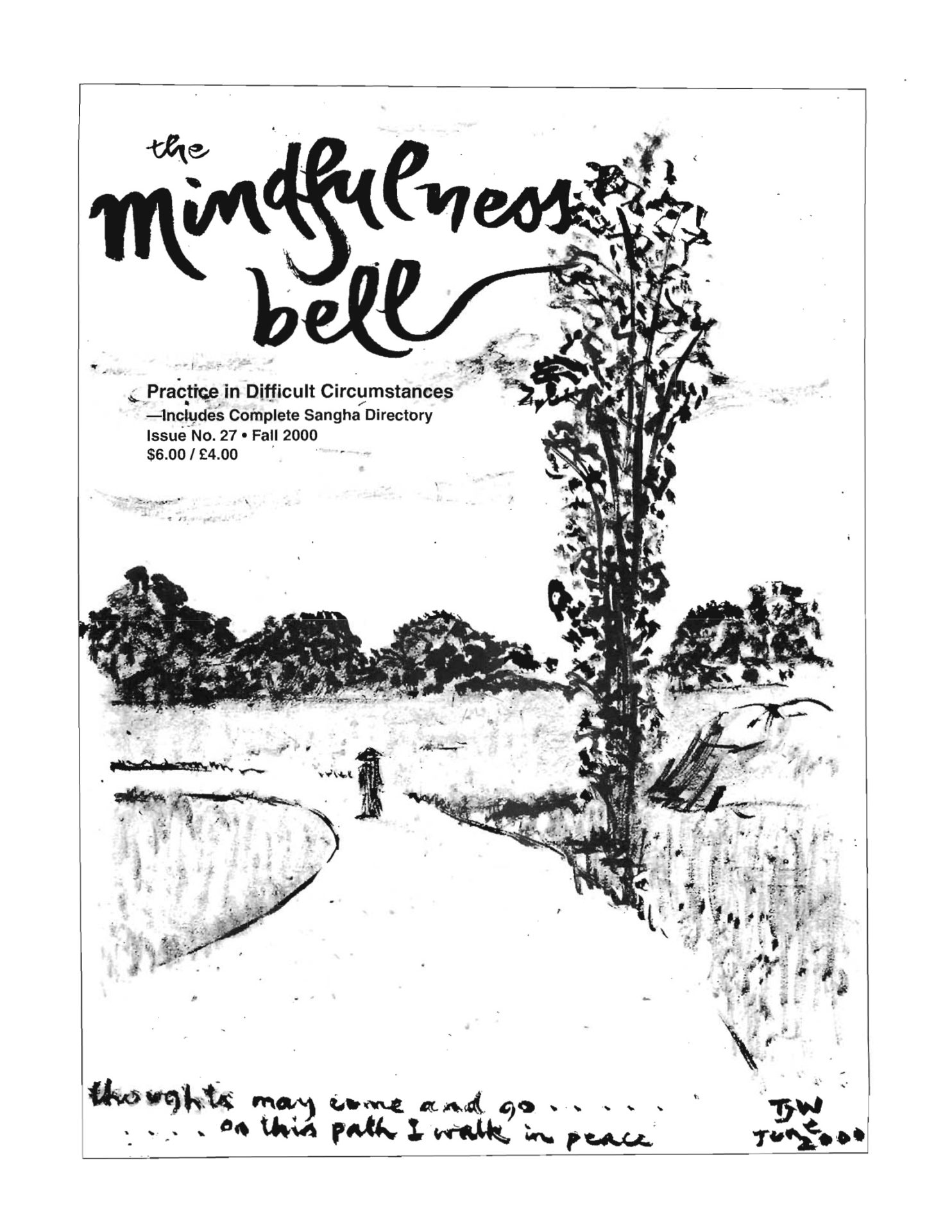Weaving the Web By Caleb Cushing
Some of us in the 25-member Pot Luck Sangha were intrigued by the Second Body practice that Thay described in “Taking Care of Each Other.” (The Mindfulness Bell, Spring 1999) Being openly responsible for supporting another person’s practice and simultaneously encouraged by another sounded profound. We imagined that a Sangha’s practice and relationships would become richer and stronger through the practice, but we’d never heard of a lay community implementing it.
Weaving the Web By Caleb Cushing
Some of us in the 25-member Pot Luck Sangha were intrigued by the Second Body practice that Thay described in "Taking Care of Each Other." (The Mindfulness Bell, Spring 1999) Being openly responsible for supporting another person's practice and simultaneously encouraged by another sounded profound. We imagined that a Sangha's practice and relationships would become richer and stronger through the practice, but we'd never heard of a lay community implementing it. Looking at the practice with our Sangha eyes, we designed a lay version and tried it with remarkable results.
First, we shared copies of Thay's article. Over the course of three meetings, we sorted through our initial concerns, such as what the practice might actually involve and how the pairings would be determined. Many questions arose. "How do we arrange pairings if someone wants to connect with a particular person? What does being a first body do and how often? How intimate and involved should we get? What about people who were marginally involved with the Sangha? Should we mix genders? When does encouragement become too intensive? A volunteer committee drafted a proposal, after eliciting all our confidential concerns and suggestions.
Some of us who were not deeply committed to the practice understandably declined to participate, and some even withdrew from the Sangha, reacting to the increased expectations of involvement. Some Sangha members paired with marginally-involved people met apathy or avoidance. Most people, however, were committed and connect to a committed body, and thus, received a lot of support.
In practice, it soon became clear that relationships were more than pairs or trios. Several second bodies appreciate the support of companionship to help establish a regular, daily practice. My first body now joins me each dawn for sitting meditation, and my second body often joins us as well. We've become dear friends and share music and books, breakfast several times a week, and lunch once a week, after we work in each other's vegetable gardens all morning!
Within each group, participants determine the type of involvement they'd like. It might be by phone or in person, talks, walks, or meals. Some people shared vacations, cars, help with finances, or rides to the airport. We found that people expected different things, and had varying amounts of time to offer. So, it helps to establish boundaries. Frustrations arose from expectations and differing commitments to practice. Mindful speech and deep listening are essential when discussing expectations. Our Sangha found that the practice reduces isolation, which Thay calls the illness of our century. But it takes time to make the second-body practice work. Commitment and involvement is key. When someone dropped out, the circle mended itself at that point, with the adjacent bodies connecting.

We shared our experiences with each other after three months of trying the practice. Here are some comments from Sangha members:
- "By focusing on one person, my view shifted from a routine, general outlook to a new and more vivid relationship, which is touchingly important."
- "The second-body practice pulls us out of our habitual self-concerns."
- "I'm surprised and delighted by the extent and depth of the connections."
- "I feel fortunate to be part of such a tender practice."
- "This practice helps us get over our shyness and feelings of inadequacy. Our awkwardness is reduced by the support and structure of the practice."
- "The more I'm involved in the Sangha, the better I feel, and this practice really supports that."
- This practice doesn't work if there's not contact. People who aren't actively, regularly involved in the Sangha don't fit in as fully."
- "It's a practice that makes us stretch."
- "This practice is my gateway to a diligent practice, and that is a great joy. I've always intended to practice regularly, and now I do. Also, I've connected up and down the circle, and to the whole Sangha."
- "Being in community means taking care of each other."
After four months, we agreed by consensus to spin the wheel again, and draw new practice partners for the next three months. This practice became a real "glue" for the Sangha, drawing us together beautifully.
Caleb Cushing, True Original Commitment, compiled this article with the help of the Pot Luck Sangha in Oakland, California.

